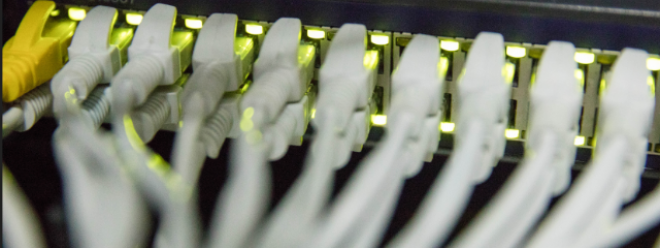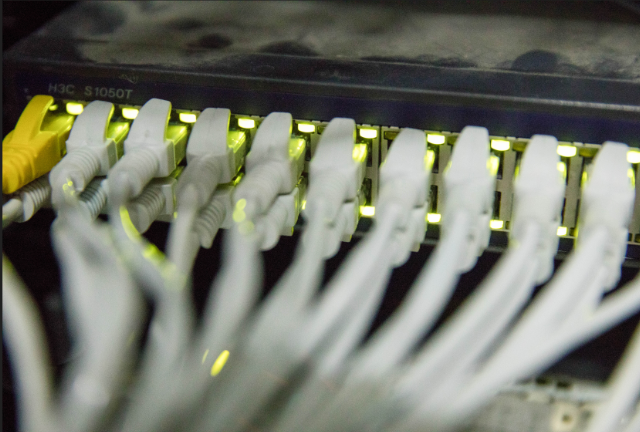Ten Tips to Simplify Fiber Optic Cable Installation

Ten Tips to Simplify Fiber Optic Cable Installation

1. Plan ahead
Proper planning and preparation are important before starting any fiber optic cable installation. This includes mapping cable routes, identifying potential obstacles, and obtaining necessary permits or approvals. It is also important to consider factors such as the type of cable, connectors and equipment required for the installation. Having a thorough plan in place will ensure a smooth installation process and identify and resolve potential problems before they occur. It's also important to do a site survey to make sure there's enough space to install cables and to check for any underground utilities or other potential hazards. Also, be sure to have a detailed test plan in place to test the cables after installation to ensure the system is functioning properly. Proper planning and preparation can save time, money, and potential hassle in the long run.
2. Choose the right cable
Fiber optic cables are an essential part of modern telecommunications infrastructure. It's worth noting, however, that not all fiber optic cables are created equal. Different cables have different properties and are designed for specific use cases. When selecting a cable for a particular application, it is important to consider the environment in which it will be installed.
For example, if the cable is to be installed outdoors, it is important to choose a cable that is suitable for outdoor use. This type of cable typically has a robust sheath that can withstand extremes of temperature, humidity, and other weather conditions. It is also resistant to damage from factors such as UV radiation, water and chemical exposure.
It is also important to consider the temperature rating of the cable. It will be exposed to different temperature ranges, such as cold or hot environments. Cables designed for extreme temperatures will have a higher temperature rating than cables designed for indoor use.
In addition, the humidity rating of the cable must also be considered. Fibers in high humidity environments are exposed to water vapor which can damage the fibers. Therefore, if it is to be installed in a high humidity environment, it is very important to choose a cable with a high humidity rating.
3. Use the right tools
Having the right tools is critical to successfully installing fiber optic cables. This includes things like fiber optic cutters, strippers and cutters, and any other specialized tools that may be required. Using the correct tools will make the installation process easier and ensure that the cables are properly prepared and connected. It is also important to use high-quality tools to ensure that the installation is done correctly and efficiently. Poor quality tools can damage the fiber optic cable, resulting in poor performance and loss of signal. Using the correct tools also helps reduce the risk of injury during installation. Also, it is important to use the correct tools for the specific type of fiber optic cable being installed, as different types of fiber may require different tools or procedures.
4. Protect the cable
During installation, it is very important to protect the fiber optic cable. This includes using a boot or conduit to protect the cable from damage, and not bending or kinking the cable. Damaged cables can cause serious problems such as loss of signal or complete system failure.
5. Test cable
Before and after installation, it's important to test the cable to make sure it's working properly. This includes continuity and signal strength testing, as well as any other testing that may be required. Regular cable testing can help detect any problems early so they can be resolved quickly and efficiently.
6. Precautions for underground installation
Underground fiber optic cable installation also faces its own set of challenges. This includes identifying the location of buried utilities and taking care not to damage them during installation, etc. It is also important to consider the type of conduit or sheathing required for underground installations to protect cables and elements from damage.
7. Use the correct stitching technique
Splicing is a critical step in the fiber optic cable installation process. To ensure a safe and reliable connection, it is important to use the correct splicing technique, such as fusion splicing. Improper splicing can result in lost signals and weak connections, which can lead to system failure. Fusion splicing is considered to be one of the most accurate and reliable methods of splicing optical cables. The process involves using heat to fuse, or melt, the ends of two fibers together, creating a permanent connection. This approach ensures low loss and high quality splices, resulting in minimal signal loss and a secure connection. In addition, using proper cutting techniques before splicing, such as precision cutting, can also greatly improve the quality of splicing. It is also important to use proper equipment such as fusion splicers and cutters, and to have trained operators to ensure the splicing process is done correctly. In summary, proper splicing techniques, equipment and well-trained operators are essential for safe and reliable connections during fiber optic cable installation.
8. Use the correct connector
Selecting the correct connector is critical to a successful fiber optic cable installation. Not only is it important to ensure that the connector is compatible with the cable and equipment being used, but it is also important to choose a connector with low insertion loss and back reflection. Using incompatible connectors may result in loss of signal, system failure, and overall network performance degradation. Researching and investing in high-quality connectors is important to ensure reliable and efficient fiber optic cable installations. Additionally, proper installation and testing of connectors is critical to maintaining a successful fiber optic cable system.
9. Follow safety guidelines
When installing fiber optic cables, safety should always be a top priority. This includes proper grounding and bonding, taking care to avoid contact with live circuits, etc. It is also important to follow OSHA regulations and guidelines to ensure the safety of installers and any individuals who may come into contact with the cables in the future.
10. Hire Professionals
If you have no experience with fiber optic cable installation, it is best to hire a professional to handle the task. Not only do they have the knowledge and expertise to get the job done right, but they are also able to deal with any unforeseen issues that may arise. Additionally, hiring a professional saves time and resources in the long run, as they will have the necessary tools, equipment, and expertise to complete the installation quickly and efficiently.
Summarize
In conclusion, installing fiber optic cables can be complex and time-consuming, but following these 10 tips can simplify the process and increase efficiency. Proper planning and preparation, selecting the correct cables, using the correct tools, protecting the cables, testing regularly, paying attention to underground installations, proper splicing techniques, selecting the correct connectors, following safety guidelines and hiring professionals when necessary, will ensure Fiber optic cable installed successfully. Remember that a well-executed installation process is critical to ensuring that fiber optic cables are installed and functioning properly.
Frequently Asked Questions
Q: What must be considered when selecting a fiber optic cable?
A: When selecting a fiber optic cable, it is important to consider the environment in which it will be installed, such as whether it will be installed outdoors or in extreme temperatures. If you are going to be exposed to extreme temperatures, it is important to choose a cable that is suitable for outdoor use or has a high temperature rating. In addition, the humidity level of the cable must also be considered, as fibers in high-humidity environments are exposed to water vapor, which can cause damage to the fibers.
Q: Why is proper planning and preparation so important before installing fiber optic cables?
A: Proper planning and preparation prior to installing fiber optic cables is critical to ensuring that the cables are installed correctly and functioning properly. This includes mapping cable routes, identifying potential obstacles, and obtaining necessary permits or approvals. It is also important to consider factors such as the type of cable, connectors and equipment required for the installation. Having a thorough plan in place will ensure a smooth installation process and identify and resolve potential problems before they occur. Proper planning also helps reduce the risk of damage that could lead to costly repairs or even complete replacement.
Q: How does it help to have the correct tools during installation?
A: Using the correct tools during installation is critical to a successful cable installation. This includes things like fiber optic cutters, strippers and cutters, and any other specialized tools that may be required. Using the correct tools will make the installation process easier and ensure that the cables are properly prepared and connected. Additionally, using the correct tools can help reduce the risk of injury during installation.
Q: How does proper fusion splicing technology ensure safe and reliable connections in fiber optic cable installations?
A: The fusion splicing process is an important part of fiber optic cable installation because it connects two separate optical fibers. If not done properly, splicing can cause loss of signal and weak connections, which can lead to system failure. One of the most effective and reliable splicing techniques is fusion splicing, which uses heat to fuse or melt the ends of two optical fibers together to create a permanent connection. This method guarantees a high-quality splice with minimal signal loss, resulting in a safe and reliable connection. To ensure the best results, it is important to use proper cutting techniques and equipment, such as fusion machines and cutting knives, with trained operators performing the fusion process.
Q: Why is it important to choose the correct connector?
A: Selecting the correct connector is critical to a successful fiber optic cable installation, as it ensures compatibility with the cable and equipment being used, as well as low insertion loss and back reflection. Using incompatible connectors may result in loss of signal, system failure, and overall network performance degradation. Researching and investing in high-quality connectors is important to ensure reliable and efficient fiber optic cable installations. Additionally, proper installation and testing of connectors is critical to maintaining a successful fiber optic cable system.